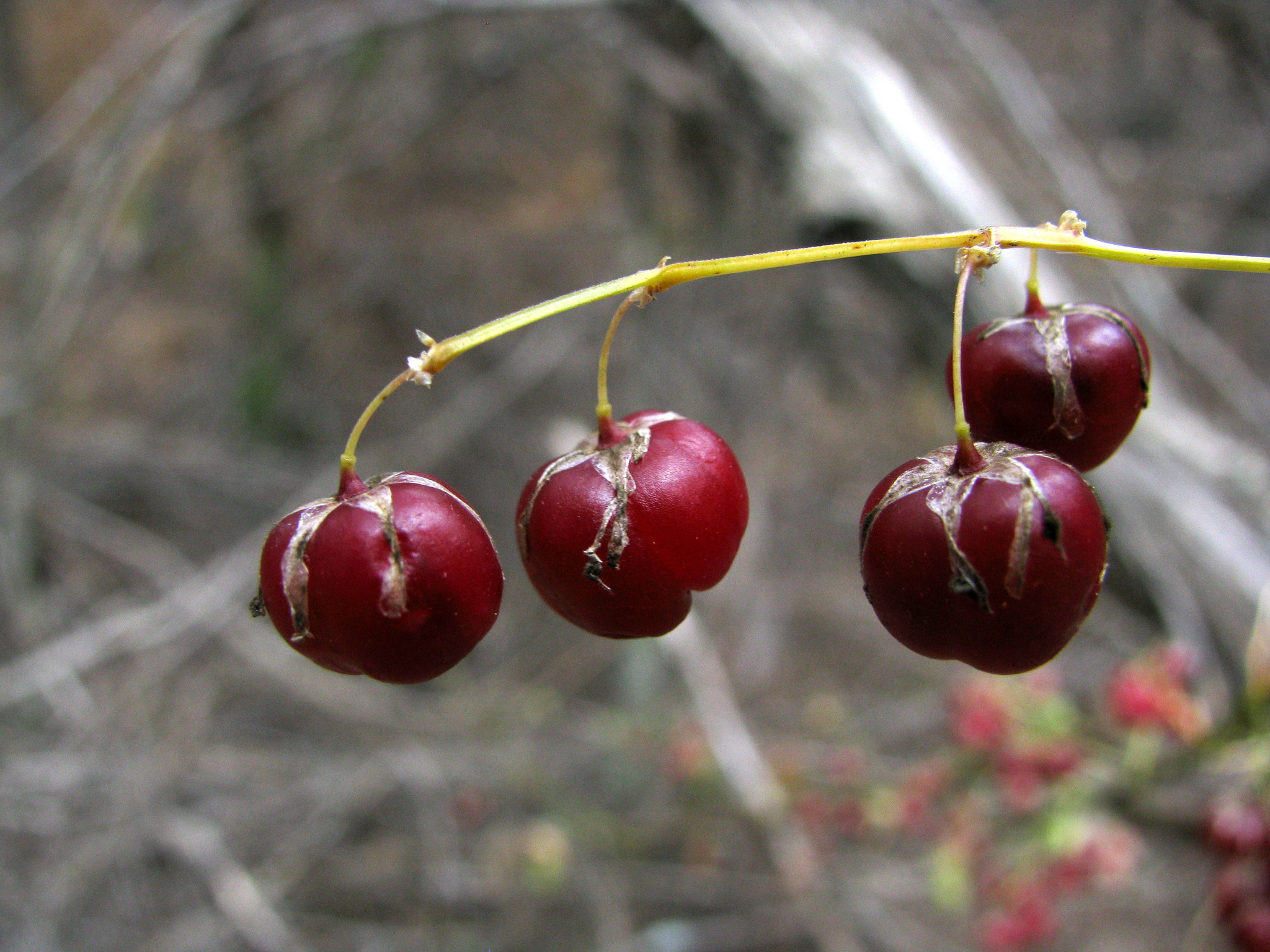
The Greek name for plants with edible young shoots.
Perennial or rhizomatous herbs or climbers with thick or tuberous roots. Leaves reduced to scales subtending leaf-like or needle-like cladodes. Flowers uni- or bisexual, open to tubular, radially symmetrical, stalked, stalks articulated. Inflorescences axillary to terminal, 1-many-flowered racemes. Tepals 3+3, free. Stamens 6, attached to tepal bases, free or running together to enclose the ovary in a tube. Fruit a berry. Seeds angular, black. Syn. Protasparagus Oberm., Myrsiphyllum Willd.
Grown for the attractive, often delicate, fern-like foliage, often in hanging baskets. Several species are noxious weeds. Previously 3 genera have been recognised on sexuality and flower structure, but these are now all placed in Asparagus.
160-290 species from Africa, Europe, Asia and Australia.
Genus of the commercial edible asparagus, A. officinalis.
Leaves replaced by cladodes; flowers numerous, small, greenish-white; berries with black seeds.
Jessop (1966), Obermeyer (1984a, b), Conran & Forster (1986), Malcomber & Sebsebe (1993). POPULAR: Dourado & England (2001).
Source: (2005). Asparagaceae. In: . Horticultural Flora of South-eastern Australia. Volume 5. Flowering plants. Monocotyledons. The identification of garden and cultivated plants. University of New South Wales Press.
